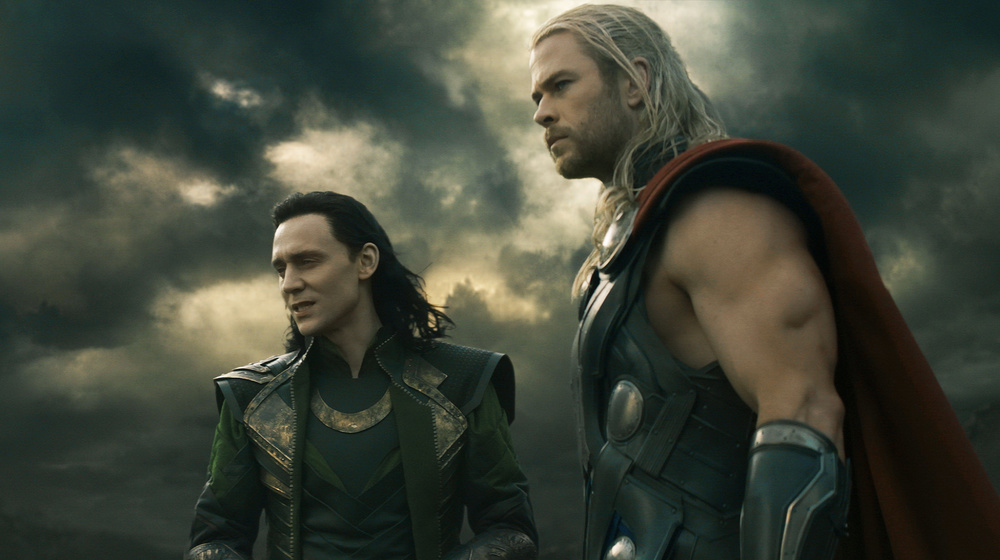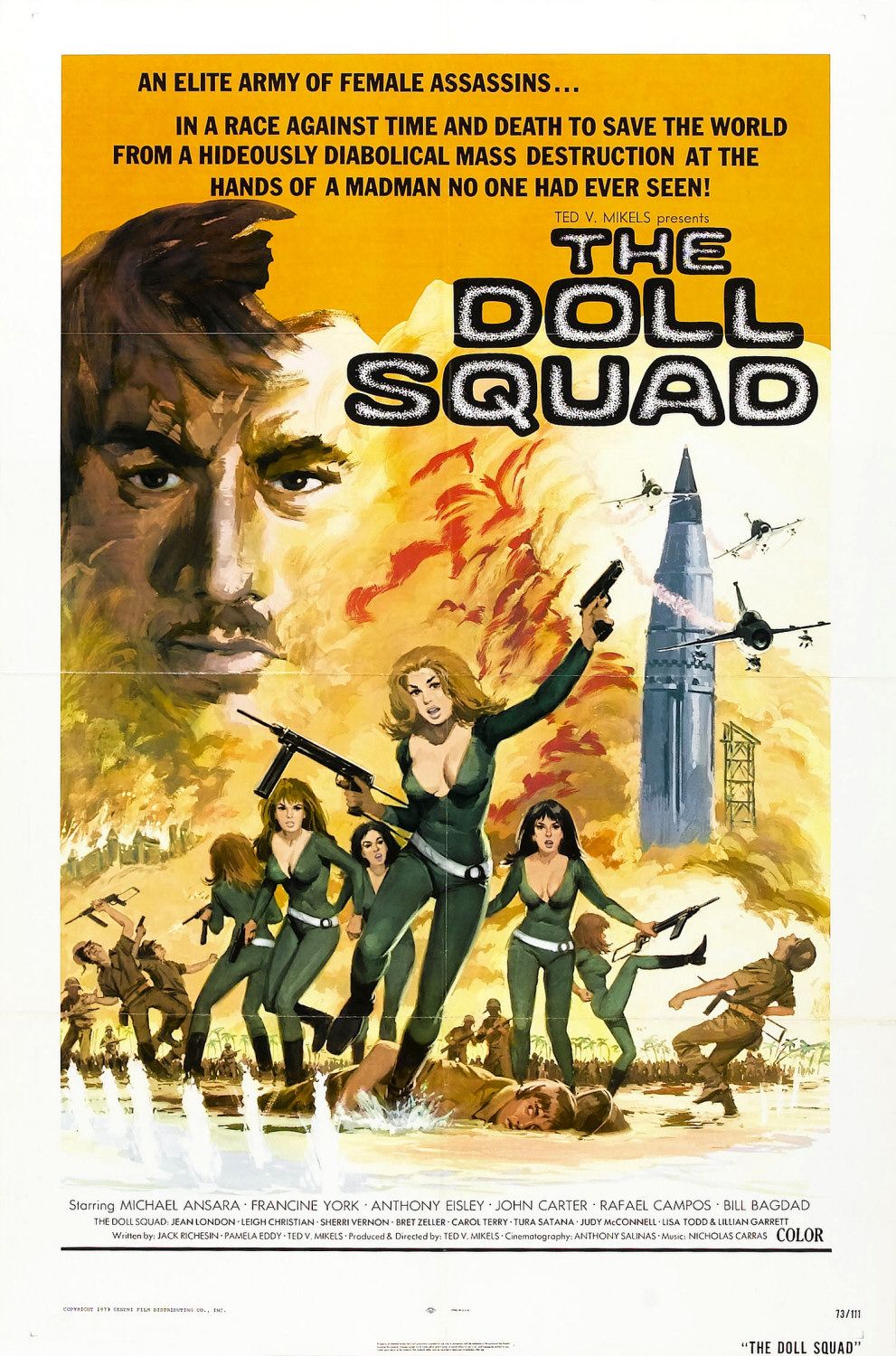TCM
TiVo ALERT
For
December
1–December 7
DAVID’S
BEST BETS:
RESERVOIR
DOGS (December 2, 4:15 am): The debut of director and
writer Quentin Tarantino, this outstanding film from 1992 tells the
story of a jewelry heist gone bad without actually showing the crime.
Tarantino borrows liberally from The Taking of Pelham of One
Two Three, Kansas City Confidential, Rififi and The
Killing, among others, yet he makes this film his own with an
extraordinary script. The casting is excellent with Harvey Keitel,
Tim Roth, Michael Madsen, Steve Buscemi and the director himself. The
action, the humor, great lines, raw energy, almost unwatchable
violence and very colorful language come at the viewer fast and
furious. A master at having music enhance his films, Tarantino uses
Stealers Wheel's "Stuck in the Middle With You"
in Reservoir Dogs' most gruesome and memorable scene.
It's horrifying, compelling, shocking and incredibly effective. The
film has great style with the substance to back it up.
THE
PETRIFIED FOREST (December 3, 4:00 am): I recommended
this film in July 2012, and for those who haven't seen it, it's one
you don't want to miss. LikeReservoir Dogs, set the TiVo as
it's being shown at a ridiculous time. As I wrote the first time I
recommended it, this is film noir before the term was coined. In one
of his first major roles, Humphrey Bogart gets to play a bad
guy – Duke Mantee, a notorious gangster on the run. He
was so great in this 1936 film as the heavy – bringing
depth, emotion and character to the role – that Warner
Brothers spent nearly five years casting Bogart in other movies as
the bad guy. But only a few were of this quality. Duke and his gang
end up in a diner near the Petrified Forest in Arizona to avoid the
police. When that doesn't work, they take everyone inside hostage.
Among those inside is Alan Squier (Leslie Howard), a once-great
writer who is now an alcoholic. Not fearing death because of what
life has become for him, Squier engages Duke in conversation, pushing
his buttons. The interaction between the two is outstanding. The film
is an adaption of the play that featured Howard and Bogart in the
same roles. Also at the dinner is Gabrielle Maple (Bette Davis), who
owns it with her father and grandfather. Davis is excellent and even
subdued (gasp!) as a secondary character (gasp!).
ED’S
BEST BETS:
DIARY
OF A COUNTRY PRIEST (December 1, 2:00 am): Robert
Bresson’s beautifully directed adaptation of Georges Bernanos’
moving novel about a young cleric assigned to a rural parish whose
self-doubts, combined with his physical ailments (stomach cancer),
keep him from becoming the spiritual leader he so desires to be among
his parishioners. Bresson focuses on the everyday life of the young
priest (who is never named) as he visits around his parish on his
bicycle. We see his interactions with unfortunate peasants,
disrespectful children, a suicidal doctor, a countess constantly
mourning her dead son, soliciting money from her husband for a
community project, and coping with stomach pains that are growing
worse. Though he seeks counsel from an older down-to-earth priest in
a neighboring parish, he can’t seem to fend off suspicions that
he’s nothing but a meddling outsider who will never understand the
parish or its citizens. Though his belief in God is strong, his
belief in his own abilities is shaky, and he comers to believe that
he will never be a good priest. As his cancer grows, he mortifies his
flesh by eating only bread soaked in wine, and though the cancer
diagnosis helps explain his decline, his spirituality not only
endures, but also grows. At the end we are informed of his death and
last words, “All is grace.” Bresson’s adaptation is not only
faithful to Bernandos’ novel, but also manages to capture the
spirituality that moves throughout the pages of the book, a difficult
task for a film. It’s a must see not only for fans of Bresson and
Bernandos – it’s a must see for all those who enjoy a faithfully
told story.
THE
TESTAMENT OF DR. MABUSE (December
6, 6:00 am): Mention the name “Fritz Lang” to any cinephile and
expect to hear “Dr. Mabuse” among the answers. Mabuse is Lang’s
master criminal par excellence; his Professor Moriarty. This is
Lang’s follow-up to M and his last film made in
Germany until his return in the ‘50s. Here we see the further
adventures of arch criminal Mabuse. Mabuse has been locked away in an
asylum for a decade. Strange things are happening between seemingly
disconnected persons and event. Disgraced cop Hofmeister (Karl
Meixner) investigates, partially to recover his tarnished reputation.
But before he can divulge the facts behind the case he is driven
insane. It is now up to Commissioner Lohmann (Otto Wernicke,
following up on his role in M) follows the trail to the
asylum where Mabuse is kept. What happens from there is compelling
viewing, especially as we quickly make the connection between Mabuse
and Hitler. Mabuse’s writing – his “testament” – is in
reality Hitler’s Mein Kampf. Goebbels banned the film
in Germany. Don’t miss it.
WE
DISAGREE ON ... A RAISIN IN THE SUN (December 5, 9:45 pm)
ED:
A. This is a
powerful film from Columbia, based on Lorraine Hansberry’s Broadway
play, and the studio was smart enough to let her write the
screenplay. It is also a deep film: set in the projects of Chicago it
shows the hardship and prejudice African-American families faced. But
below that surface it is also a study in character, namely how the
women in the movie wait for the man of the family, Walter (Sidney
Poitier), to finally find himself. The premise of the film is simple:
how best to use a life-insurance bequest of $10,000. Mother
Lena (Claudia McNeil) wants to use it to buy a house and as
tuition for her daughter’s (Diana Sands) medical school. Son Walter
wants to use it to buy a liquor store and escape his job as a
chauffeur for a wealthy white man. How the movie eventually plays out
will leave no one that watches it unmoved. The cast is strong and
their performances pitch perfect. A
Raisin in the Sun is
one of the best movies to date about the American Dream and how best
to achieve it.
DAVID: B. There's
no doubt this is a fine film, but it doesn't deserve an "A"
grade. Like The Petrified Forest, A Raisin in the
Sun was originally a play. But the latter feels too much
like a play with the small set – which isn't always a bad
thing such as 12 Angry Men. But A Raisin in the
Sun would have benefited from giving the performers more
space and less opportunities to overact. Overacting is far too common
on Broadway, and it carries over into this film. As Ed wrote, the
premise is simple. The family inherits $10,000 in life insurance
after the death of its patriarch and everyone is torn as to how to
use the money. The actors work well together with effective
performances by most, particularly Sidney Poitier (of course),
Claudia McNeil as his mother, and Ruby Dee as his wife. The storyline
is touching and tragic though the ending is just not believable. It's
a very good film and one worth seeing. But, unlike Ed, I don't
consider it one of the best movies to date about the American Dream
and how best to achieve it.
For the complete list of films on the TCM TiVo Alert, click here.


















